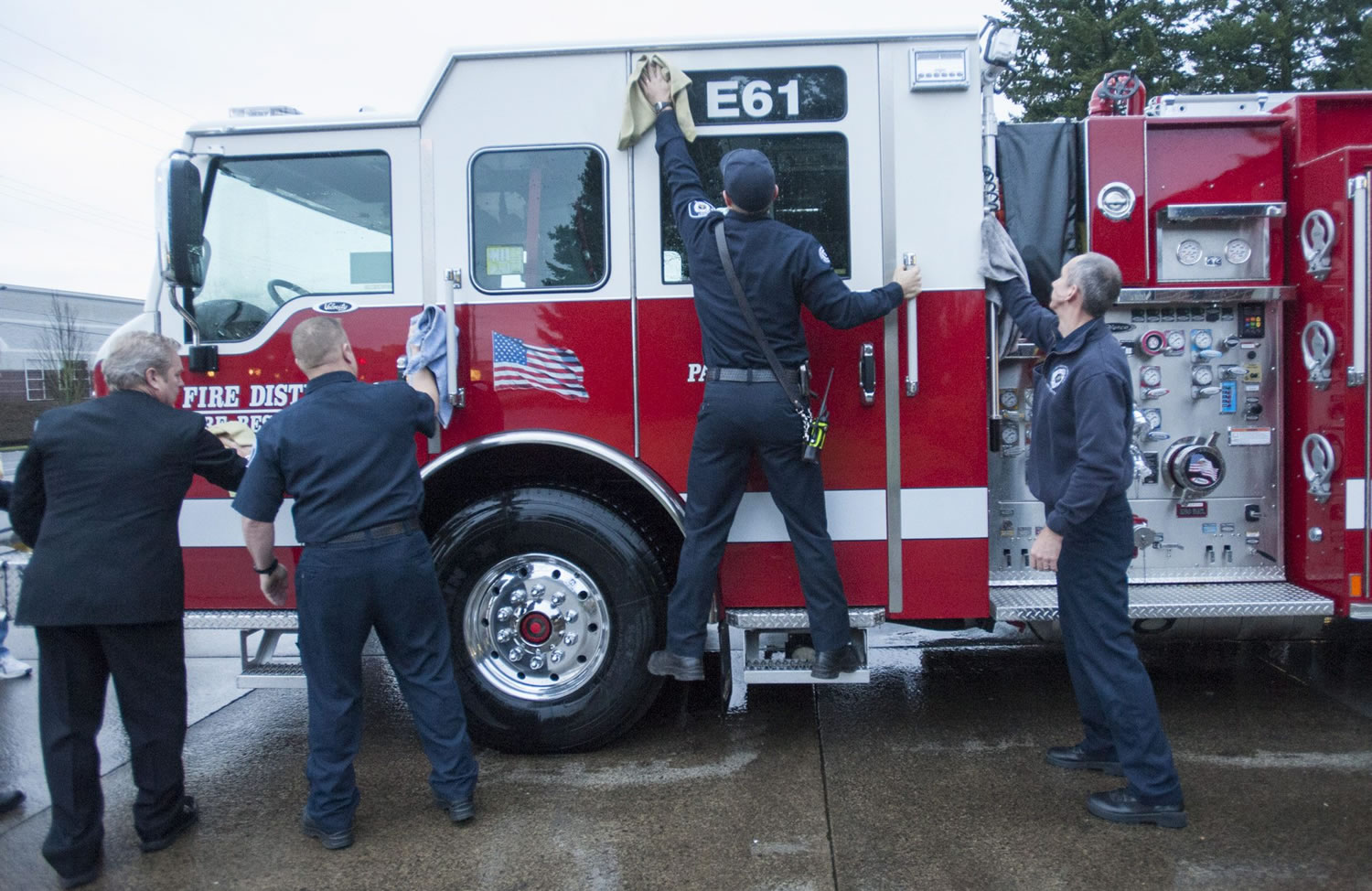After Clark County Fire District 6 voters approved a hike in their property taxes in November, district officials are planning how to spend the money, with much of it going to planning a new fire station in the Salmon Creek area.
The district also has purchased and placed into service two new pumpers to replace older models.
The district, which encompasses Hazel Dell, Salmon Creek, Felida, Sherwood, Lake Shore and the Fairgrounds areas, has three stations: a main station in Hazel Dell and others in Salmon Creek and Felida.
The Salmon Creek station, Station 63 at 1200 N.E. 134th St., was built in the 1970s, and the district plans to replace it, either by building a new facility at the same site or selling the property and building new elsewhere in the area.
“That station’s over 30 years old, and we’ve reached capacity,” said Assistant Chief Kristan Maurer, who has been organizing the planning for the new station. “The call volume in the Salmon Creek area is increasing. We need more space to run more personnel and apparatus out of that station, and there’s just no room to grow.”
Modern fire engines barely fit in the station’s vehicle bays, and there isn’t enough room to house the number of firefighters that corner of the district needs for proper coverage, she said.
The district will review proposals from architectural firms in the coming weeks and plans to pick a design firm next month.
As a general rule, new fire stations usually take a year of planning and a year of construction, she said. Building a new station would cost roughly $250 to $300 per square foot, not including property costs, should the district choose to sell its current property and build elsewhere.
The current Station 63 is about 6,000 square feet and houses one engine company, Maurer said. The district wants the new fire station to accommodate two companies. That will take about 10,000 to 12,000 square feet, which works out to about $3.6 million at the high end.
The other stations are starting to show their age, as well, she said: There’s a general dearth of facilities for female firefighters and the stations all need, at least, an assessment for possible seismic upgrades.
“We’re just growing faster than our facilities are,” Maurer said.
Assistant Chief David Taylor said once the board of commissioners decides on a plan for the facilities upgrades, District 6 will probably take out general obligation bonds to be repaid with taxes from the levy lift.
Not including regular increases from rising property values and sales tax from new construction, the new levy rate will bring the district about $2 million more in property taxes 2016. The district collected roughly $8 million in 2015, he said.
Estimates made before the election projected the new levy rate would bring in about $2 million more revenue each year through 2020, give or take a couple hundred thousand dollars.
Insurance savings
It’s possible that construction of a new fire station with improved training facilities will lower fire insurance costs for district residents. The state insurance ratings agency requires better training facilities than the district currently offers. Better facilities could result in a better fire insurance rating.
More importantly, Maurer said, it would make it easier for firefighters to train and practice. Currently, the district has to send new firefighters to the state fire academy in North Bend, she said.
“Firefighters have to know how to pull hose, they have to know how to take a hydrant, they have to know how to flow water,” she said. “Everything we do comes back to citizen safety and firefighter safety.”
The new revenue will also go to equipment and vehicle costs, Taylor said.
The district brought its two new engines with money saved in its reserve fund last year, he said. Those engines went into service last week, and cost about $575,000 each.
The district had about $250,000 left in reserve by the election, and the new revenue will help replenish that fund and pay for future vehicles.




